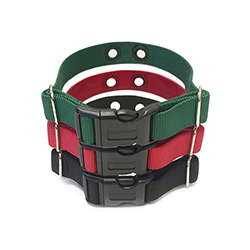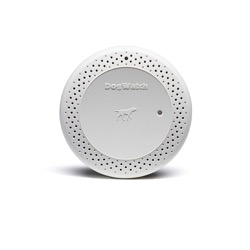They paw or scratch at the door. They sit at the window meowing. They follow you around the house, almost tripping you at every turn. If you have an outdoor cat, you know how much they love being outside and will do almost anything to get there.
If you have an outdoor cat, you also know the dangers of letting your feline family member outside. Outdoor cats live, on average, an estimated 8-10 fewer years than their indoor counterparts. A couple of common dangers for outdoor cats include feral animals, vehicles, and toxins such as antifreeze and fertilizers. However, there is a way to allow your outdoor cat to be an outdoor cat AND keep them safe!
A DogWatch® Underground Hidden Fence can help keep your outdoor cat safe by keeping them within the boundaries of your property while still allowing them the freedom to roam. Over the past three decades, DogWatch® Dealers have installed underground dog fences and indoor boundaries for thousands of cats across the country and around the world.
But how do you train a cat to use an electronic pet fence system?
DogWatch® Dealers adapt their training techniques to meet the specific needs of cats, most of whom do not use leashes and do not accept verbal training in the same way as dogs. Unlike dog hidden fence training, cat training begins exclusively indoors. The outside system is not activated for about 2-5 days while the cat adjusts to and learns the system on the indoor unit. Meanwhile, the system is installed in the designated outdoor area with careful consideration of the cat’s abilities to escape (for example, tree branches or structures such as sheds that they may climb).
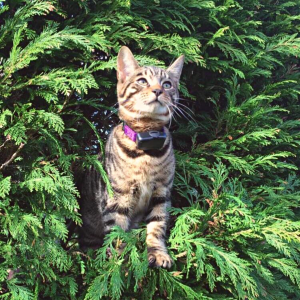
Visual landmarks such as flags, which are used in the early training stages for dogs and removed once the dog is accustomed to the boundary, may remain in place slightly longer for cats using the fence, providing the cat with an easy way to identify the boundary during this introductory period. DogWatch Dealers report that cats trained in this manner can be fully competent with the system within 2 weeks, and that learning in small increments is the best way forward for the cat. Once trained, cats can roam freely in the yard and explore like they love to do, and their humans can rest easier.
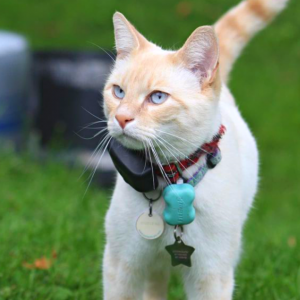
Here are some additional cat underground fence training facts and tips:
- Cats are the second most common pet trained to use DogWatch Hidden Fences and Indoor Hidden Pet Boundaries. Other animals trained include pigs, goats, sheep and horses – plus one fox and (believe it or not) one skunk.
- DogWatch’s smaller R7mini receivers are small enough and light enough for all breeds of cats.
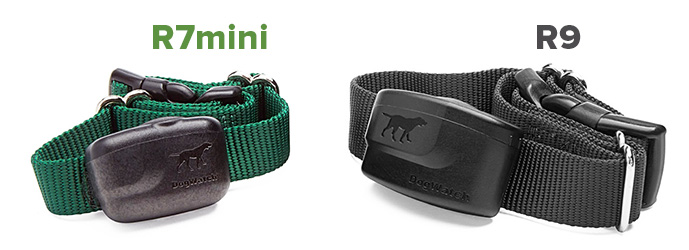
- If a cat is not used to wearing any type of collar around its neck, DogWatch Dealers suggest slowly introducing a collar (without the Hidden Fence receiver attached) for 2-3 weeks prior to the start of Hidden Fence or Indoor Boundary training.
- Optional GentleFit™ Contact Posts are a popular choice for cats. These conductive plastic contact posts help minimize friction and provide a low profile for a comfortable Pet-Friendly™ fit that can help ease cats into the habit of wearing a containment collar.

- As a general guideline, cats should be at least 4 months old before beginning hidden fence training. For kittens especially, pet parents should closely monitor the fit of the collar on their growing cats, and adjust according. As we advise our dog parents, cat parents should remove their pets’ hidden fence collars regularly when not in use to prevent skin irritation.
- Hidden Fences not only protect cats by keeping them away from busy roads and other hazards, they also protect local wildlife populations by restricting cats (and their strong prey drive) to smaller, designated areas.
- Just like our outdoor dog fences, DogWatch Hidden Fences for cats can be adjusted for properties of all sizes, from small townhome patios to large farm properties. Cat parents can also adjust their fences to keep cats out of specific areas of their property, including driveways, pools or flower beds.
- Cats parents can use the same collars used for outdoor cat fences to set up indoor “no go” areas using DogWatch Indoor Cat Boundaries. Indoor Boundaries can help keep cats off kitchen counters, away from the new sofa or out of bedrooms.
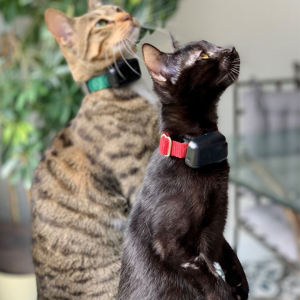
- In an article published in the science journal PLOS ONE on September 7, 2016, a team of animal behavior researchers from the University of Lincoln in the UK studied the effects of long-term exposure to an electronic containment system (such as a DogWatch Hidden Fence) on the behavior and welfare of pet cats, and found that use of these fence systems “does not impair the long term quality of life of cats.” Click here to read more about this study.
Special thanks to Samantha and Ward Chapman of DogFence, our DogWatch® dealer in the United Kingdom and Ireland, for contributing their cat training expertise to this blog post. Check out their cat-specific website, CatFence, for even more cat training info!
DogWatch hidden dog fences are often mistakenly referred to generically as “invisible fences” or “invisible dog fences.” Invisible Fence® and Invisible Fencing® are Brand names, products and registered trademarks of Invisible Fence, Inc.





